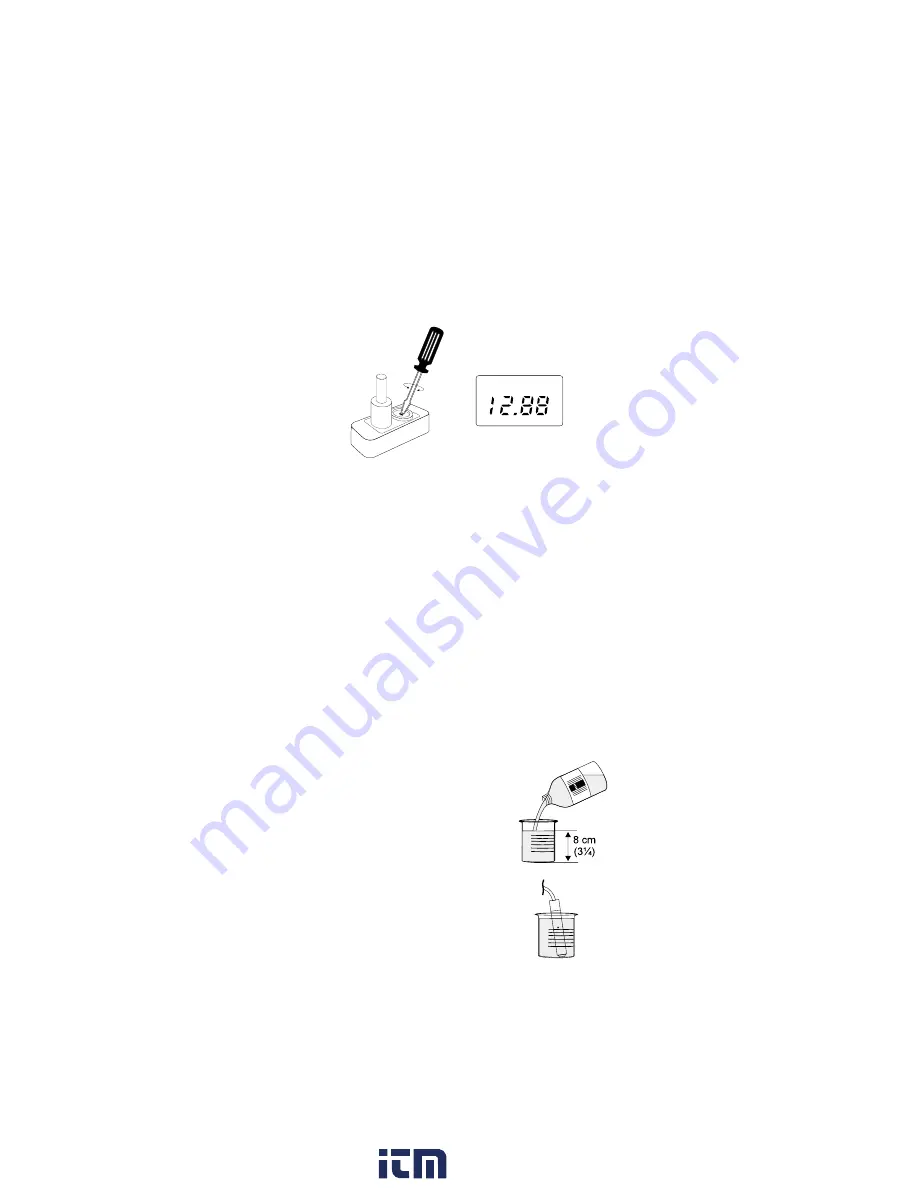
16
minutes if there is a temperature difference of 5°C (9°F) or more
for the ATC circuitry to compensate completely.
•
When the reading stabilizes, turn the calibration trimmer until
the display reads the proper conductivity value @25°C.
For example with HI 7030/HI 8030 turn the trimmer to read
12.88 mS/cm @ 25°C.
Note:
It is also possible to standardize the calibration to have
readings compensated to 20°C (68°F) rather than 25°C
(77°F). During the calibration, as explained above, simply
adjust the trimmer to the calibration buffer reading at 20°C
(68°F). For example, for HI 7030 / HI 8030 this value is
11.67 mS/cm and can be found on the conductivity vs.
temperature chart on page 22.
The calibration is now complete and the instrument is ready for use.
All subsequent measurements will now be compensated to 25°C
(77°F).
If the instrument cannot be calibrated refer to the Probe Maintenance
section (page 30).
You can calibrate the instrument using any other Hanna calibration
solution in exactly the same way. For example with HI 7031 /
HI 8031 turn the trimmer to obtain 1413 µS/cm @25°C.
PROCEDURE FOR HI 9034
•
Fill a beaker with 8 cm (3¼") of TDS
calibration solution (if possible fill two
beakers and use one as rinse and the
other for calibration).
•
Make sure that the probe is connected to
the meter securely by aligning the pins
with the socket, pushing the plug in and
tightening the threaded ring.
•
Immerse the probe into the beaker. The
level of solution must be higher than the
holes on the PVC sleeve.
mS
www.
.com
1.800.561.8187
















































